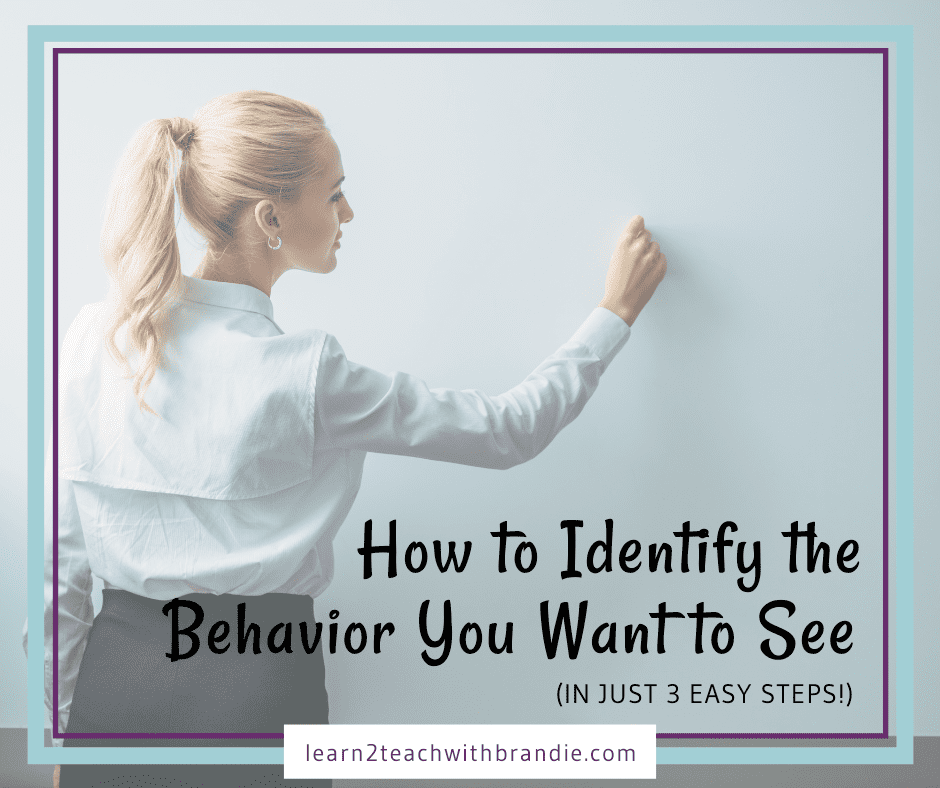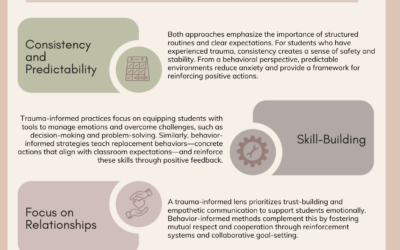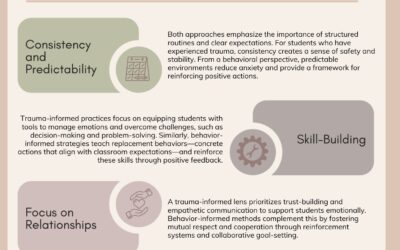This time of the school year can often bring out the most challenging of student behavior. Add in increased stress and anxiety from teachers and students, changes in scheduling, virtual school, blended day models, and the “behavior struggle” is REAL!! The good news is that no matter how challenging the behavior, answering the 5-golden questions can help you identify the behavior you want and solve any behavior struggle that comes your way.
The five questions are:
- What is the behavior you don’t want to see?
- When is that behavior happening?
- Why is the behavior happening?
- What do you want to see instead?
- How are you going to teach the new behavior?
Each answer is critical in changing behavior, but identifying what behavior you want to see instead is often overlooked.
Use the following 3-step strategy to identifying the behavior you want to see!
3 Steps to Identify the Behavior You Want to See
Step 1: What Do You Want them To Do?
Instead of only thinking about the behavior you don’t want to see anymore, what would you want students to do INSTEAD. So often we spend time thinking about what we don’t want our students to do but forget to think about what we want to see instead. If we aren’t clear on what we want, you can be sure the students won’t be clear either!
Step 2: Prioritize
If you have more than one behavior, prioritize which one you want to work on first. Dealing with behavior is challenging and trying to target more than one behavior at a time is a recipe for disaster. Just as we wouldn’t target more than one academic area of need at the same time, teaching one behavior at a time will get you the best results. I know it is tempting to deal with everything at once, but what will happen is you will become overwhelmed AND the behaviors won’t change. Slow and steady will get you where you want to be!
Step 3: Break It Down
Once you know what you’d like to see instead, break that behavior down into 3 to 4 steps. We often assume that kids know what to do, but just aren’t doing it. (This is one of the biggest mistakes people make when dealing with behavior). While this may be true for some students, it is often less true than you think. To really teach new behaviors you need to break them into small and easily followable steps so that students know EXACTLY what you are looking for.
Use This For ANY Behavior in Your Classroom
Then just “wash and repeat” with each new behavior you are targeting! There is no quick fix in changing behavior but knowing what you want to see behaviorally in your classroom is an important piece of the plan.
Remember, answering each of the five questions is critical in coming up with a plan to change difficult student behavior.





